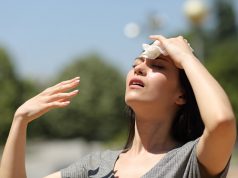Who doesn’t get common cold? It is one of the most common winter illnesses that lead to more doctor visits and absences from school and work than any other illness every year. But don’t worry, with this small guide, we will try to help you understand more about the common cold and how to prevent it.
Most children will develop around six to eight colds a year. This number increases for children who attend day care, but don’t let this increase your concerns about your child’s immunity. Colds may occur less frequently after the age of six. Children are most likely to have colds during fall and winter. The increased incidence of colds during the cold season may be attributed to the fact that more children are indoors and close to each other. In addition, humidity drops during this season, making the nasal passages drier and more vulnerable to infection.
Most colds are caused by viruses. In fact, there are over 200 types of virus that can cause an URI. This is why you can’t be immunized against colds. The flu vaccine only protects against influenza viruses that cause flu, not other viruses that can cause a common cold.
The viruses that cause colds are spread by sneezing, coughing and hand contact.
After the virus enters your child’s body, the body’s immune system begins to react to the foreign virus. This, in turn, causes:
- An increase in mucus production (a runny nose).
- Swelling of the lining of the nose (making it hard to breathe and causing congestion).
- Sneezing (from the irritation in the nose).
- Cough (from the increased mucus dripping down the throat).
Cold symptoms usually last from a few days to a week or more. Your child will usually recover fully without any problems.
Cold treatment
There is no specific treatment that can make the cold go away more quickly but there are several options that can help relieve symptoms:
- Paracetamol, given in recommended doses can help if your child has a fever or is in pain (if the fever lasts more than 48 hours, it’s best to see your doctor)
- Warm drinks, which can ease a sore throat and dry mouth
- Saline nasal drops or spray can ease a blocked nose.
Although it’s likely your child won’t be hungry, make sure he drinks lots of fluids so that he doesn’t get dehydrated. Your child’s appetite will come back as he starts to feel better.
You should avoid the following:
- Aspirin – it can cause your child serious illness
- Cough medicines – your child is coughing because her windpipe is irritated or has a lot of mucus, and cough medicines won’t help with either of these issues
- Decongestants (found in most of over the counter cold and cough preparations) – these have side effects such as rapid heart rate, jitteriness and insomnia.
- Antibiotics – colds are caused by viruses, so antibiotics won’t help. The development of thick yellow-green nasal discharge during a cold doesn’t necessarily need antibiotics. This could be the normal end stage of a cold running its course. Treatment should be considered for a green runny nose that does not clear after 7 to 10 days or the cold symptoms do not go away by 10-14 days. So, it’s not about the color but the duration.
There’s no need to stay away from dairy products – they don’t make extra mucus.
Prevention
It’s pretty much impossible to stop children from getting colds. However, there are some simple things you can do to reduce your child’s chances of getting a cold or passing it on – for example, wash your own and your child’s hands after sneezing, coughing and blowing the nose, and before eating. You can also teach your child to cough into her elbow to avoid getting germs on her hands.





